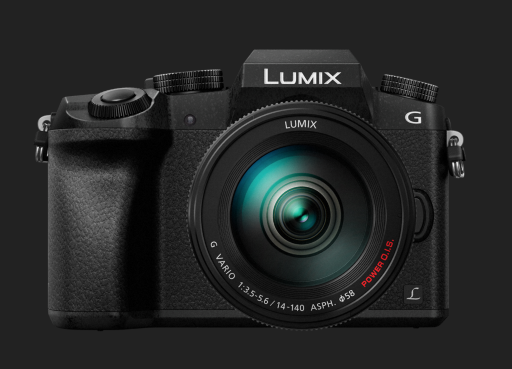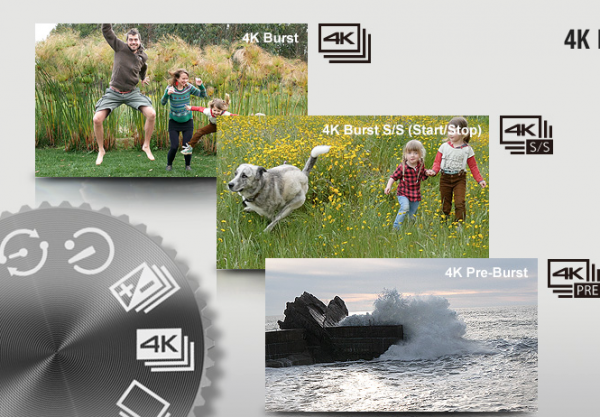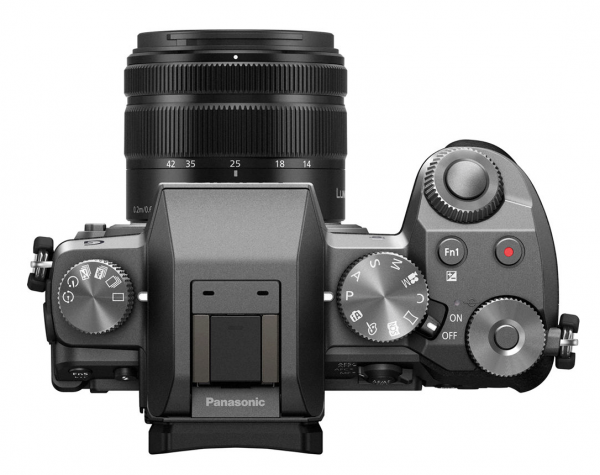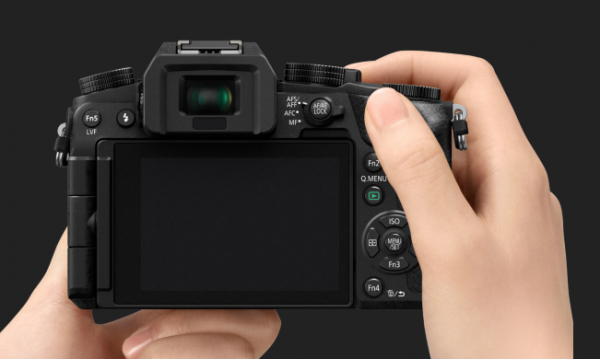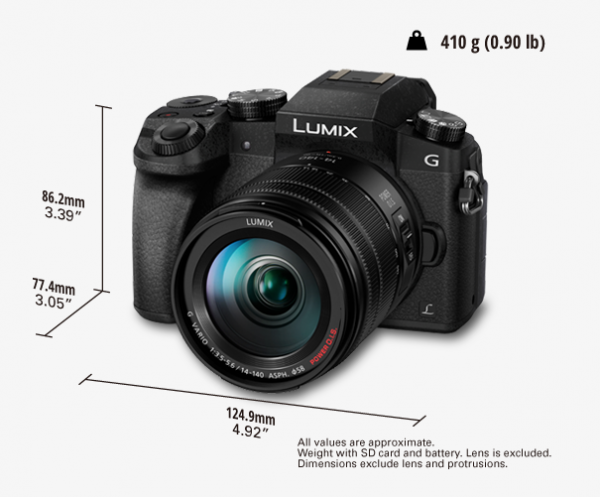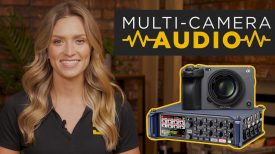By technical editor Matt Allard:
Panasonic has announced the Lumix G7, a highly capable mirrorless micro four thirds 4K camera that will retail for under $800 US in a kit with a 14-42mm lens. The G7 features a 16 MP Live MOS Micro Four Thirds sensor that can record 4K UHD video internally, as well as offering a wide range of options for stills capture and burst shooting. Panasonic are touting the G7 as a true hybrid 4K Video/4K Photo camera, that is designed to offer the same level of performance no matter what you are using it for. It is good to see manufacturers starting to embrace the idea that a lot of users want a versatile camera that does more than one thing well – video functions are often treated as an afterthought in this segment.
As far as video performance goes the G7 looks to offer a lot of bang for your buck, but it does have some limitations and you shouldn’t expect GH4-like performance. It can record up to 30p 4K UHD (3840×2160) at 100Mbps in MP4 and in full HD (1920×1080) up to 60p, but only at 28Mbps. You can also choose to record in AVCHD in HD only, and again you will be limited to a maximum bit rate of 28Mbps. The camera has framerates and recording options listed for both PAL and NTSC settings but it looks like the camera willl be region specific and not a true world camera. Another serious limitation is you can only record a maximum clip length of 29 Minutes 59 Seconds in both 4K UHD or HD. The G7 looks like it can be used in either 4:3 or 16:9 aspect ratios for video recording which will be good news for those interested in using anamorphic lenses.
What is interesting is there are two Cinelike gamma settings available: Cinelike D and Cinelike V. These appear to be the same as those on the GH4 and can be used in manual-mode video recording. Both attempt to create a more film-like image by tweaking the picture’s gamma curve: Gamma D prioritises dynamic range and Gamma V prioritises contrast.
The G7 features an onboard microphone as well as a 3.5mm input for connecting an external mic, but no headphone jack which is a major oversight. Panasonic also offers optional shotgun-style microphones, including the DMW-MS2, that can interface with the camera. The G7 also features a micro HDMI TypeD connector and according to Panasonic can output the following: Auto / 4K / 1080p / 1080i / 720p / 480p (576p in PAL system) with stereo audio. For users wanting to record at a higher quality than is available internally, it does seem that you will be able to record UHD external to either a Atomos Shogun or Odyssey 7Q+.
Other features of the G7 include low-light sensitivity up to ISO 25600, continuous shooting to 8 fps with single-shot AF, as well as a trio of 30 fps shooting rates based on the 4K UHD video recording that Panasonic are calling “4K Photo Modes.” There are three different modes you can choose from that enable you to record continuously at a resolution of 8 MP.
4K Burst: Just as with video recording, this mode will allow you to continuously record 8 MP images at 30 fps for up to 29 min. 59 sec., making it ideal for instances where you need a fast frame rate in order to capture the best moment.
4K Pre-Burst: This mode is ideal for times when you’re unsure of the critical moment to press the shutter button and will record 8 MP images at 30 fps one second prior to and one second after pressing the shutter button in order to give you 60 frames to choose from.
4K Burst (S/S): This mode most closely follows the 4K video recording process, and allows you to playback your video, pause at the chosen moment, and use the shutter button to mark a chosen frame from the video and save it as a single 8 MP frame.
Complementing the fast burst shooting modes is a DFD autofocus system, which works to boost focusing speeds and, according to Panasonic, ‘emphasise accurate subject tracking for consistently sharp imagery in fast-paced and trying working conditions’.
If you are familiar with Panasonic cameras such as the GH4 you will find the design of the G7 very similar. The camera features physical exposure control dials, six customizable function buttons, a high-resolution EVF and 3″ tilting touchscreen LCD, and built-in Wi-Fi for wireless sharing and remote camera control.
The G7 does lack some of the more advanced video functionality of the GH4, but for those looking for a small digital camera that bridges the gap between stills and video this may well be the camera you have been looking for. The G7 will be available at the end of June for $797.99 US with an included 14-42mm lens, or with a 14-140mm lens for $1097.99 US. There is no indication on whether the camera will be available to purchase without a lens at this stage.
Video Recording Options:
MP4 UHD
3840 x 2160p / 30 fps (100 Mbps)
3840 x 2160p / 24 fps (100 Mbps)
High Definition MP4
1920 x 1080p / 60 fps (28 Mbps)
1920 x 1080p / 30 fps (20 Mbps)
High Definition MP4
1280 x 720p / 30 fps (10 Mbps)
Standard Definition MP4
640 x 480p / 30 fps (4 Mbps)
High Definition AVCHD
1920 x 1080p / 60 fps (28 Mbps)
1920 x 1080p / 30 fps (24 Mbps)
1920 x 1080p / 24 fps (24 Mbps)
High Definition AVCHD
1920 x 1080i / 60 fps (17 Mbps)
Aspect Ratio: 4:3, 16:9
Video Clip Length: Up to 29 Minutes 59 Seconds
Audio Recording Built-in Mic: With Video, Stereo
Optional External Mic: With Video, Stereo
Other Camera Features:
-An electronic shutter function affords both a high top shutter speed of 1/16,000 sec. as well as silent operation for quick, inconspicuous shooting.
-UHS-II SDHC/SDXC memory cards are supported in order to benefit the high-resolution, data-intensive 4K movie and raw burst shooting workflows.
-An Electronic Level Gauge can be used to help ensure level horizons and plumb verticals.
-HDR (High Dynamic Range) automatically composites several images of varying exposures in order to gain greater highlight and shadow details and an extensive middle range of tones.
-A built-in pop-up flash provides additional illumination for photographing in difficult lighting conditions, and features a guide number of 20.3′ at ISO 100.
-A Panorama mode automatically stitches together multiple images in order to realize one wide-spanning horizontal or vertical image.
-Photo Style modes: Standard, Vivid, Natural, Monochrome, Scenery, Portrait, Custom, Cinelike D, and Cinelike V.
-Creative Control modes: Expressive, Retro, Old Days, High Key, Low Key, Sepia, Monochrome, Dynamic Monochrome, Rough Monochrome, Silky Monochrome, Impressive Art, High Dynamic, Cross Process, Toy Effect, Toy Pop, Bleach Bypass, Miniature Effect, Soft Focus, Fantasy, Star Filter, One Point Color, and Sunshine.
-Language support: English, Japanese, German, French, Italian, Spanish, Portuguese, and Chinese (Traditional).

